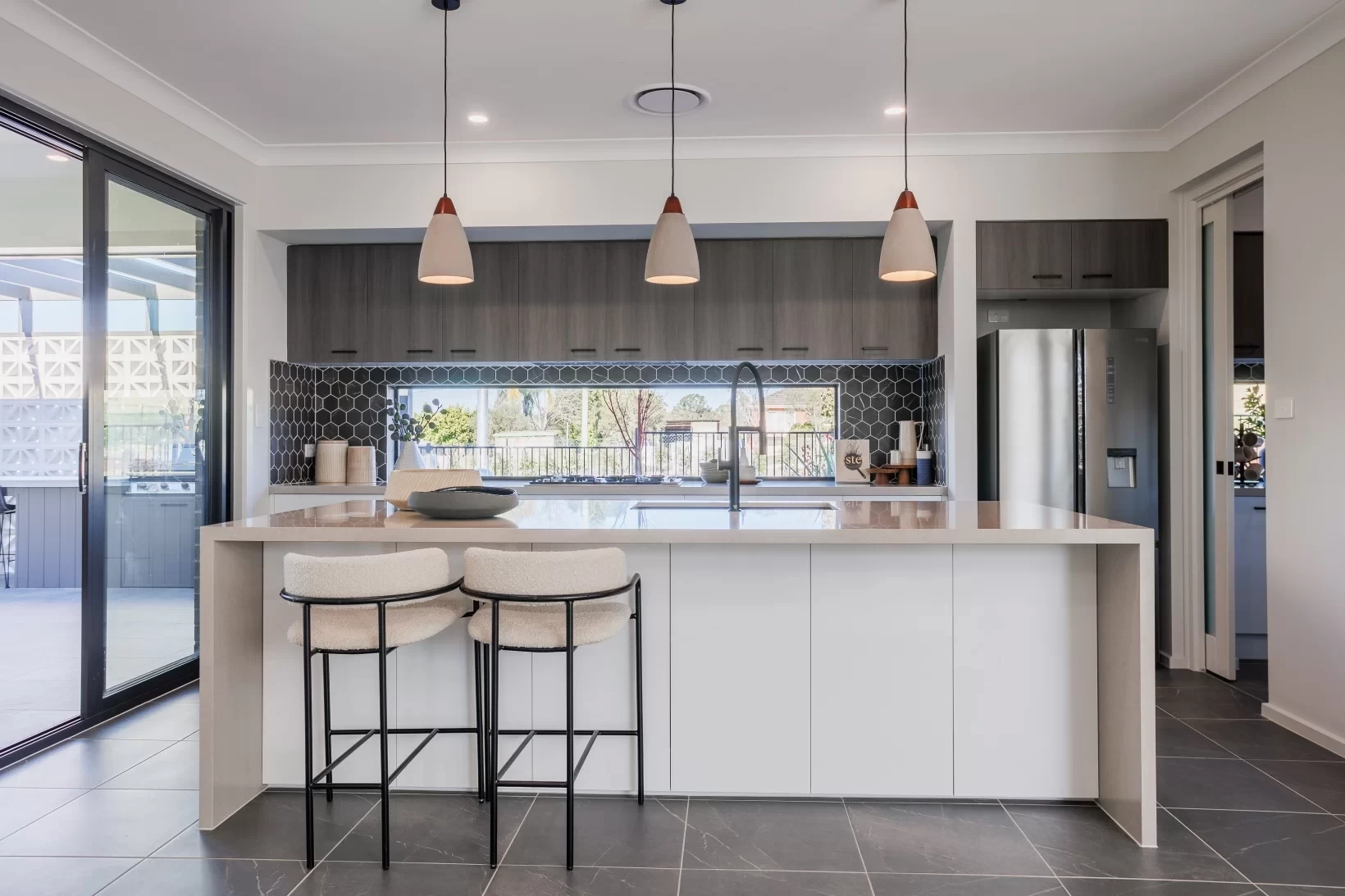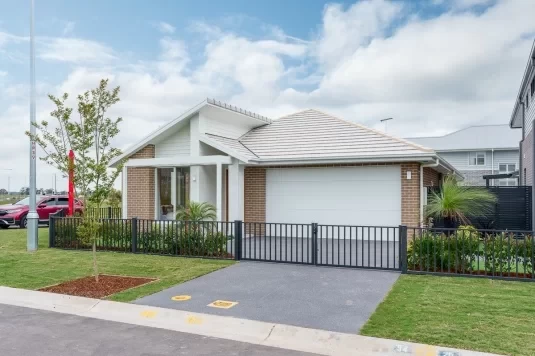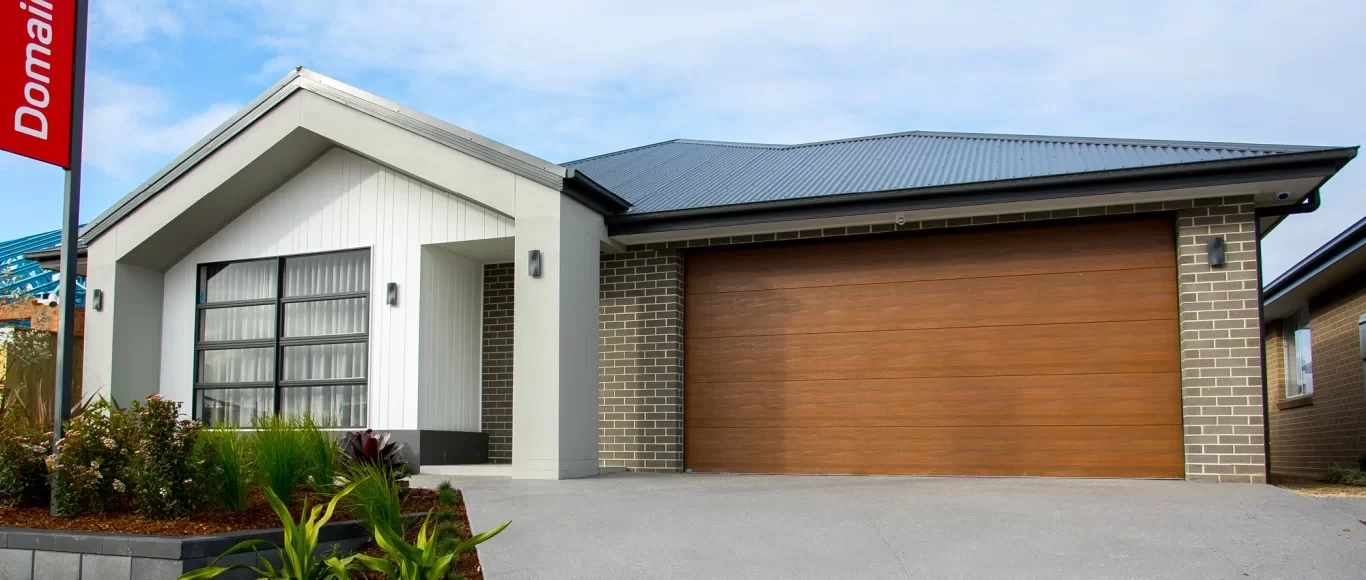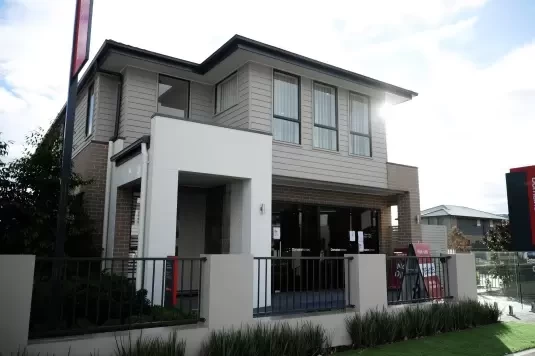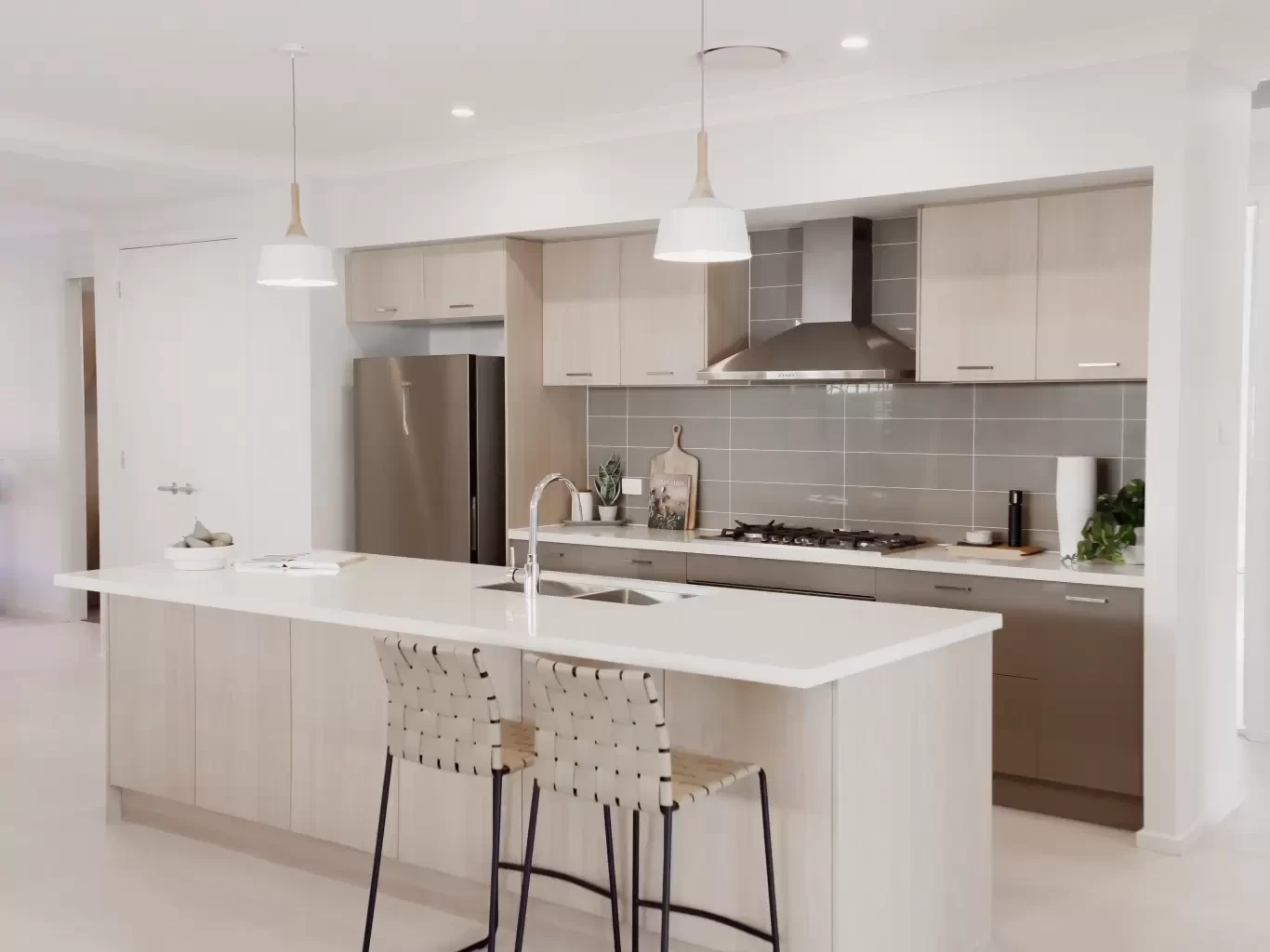Steps to Building a House in Australia
Everything you assume about constructing a home in Australia is likely outdated. In 2025, the landscape has transformed. Builders and visionaries now encounter a fresh terrain that requires both prudence and daring innovation. This ultimate guide is crafted to help you navigate Australia’s unique demands, turning potential intricacies into rewarding experiences.
Picture standing on the verge of bringing your dream home to life, only to find yourself entangled in complexities. Regulations have become stricter, material costs can shift unexpectedly, and discovering the perfect plot feels like searching for a needle in a haystack. The stakes are undeniably high, yet the potential rewards are even greater. By understanding these challenges, you unlock the potential to convert them into stepping stones.
Eager to convert dreams into blueprints? Let's transform those ideas into reality. Here, you’ll uncover the essentials: selecting a location that checks all your boxes, mastering the building regulations of 2025, and assembling the ideal team. This isn’t solely a guide to balancing bricks and budget; it is about shaping a lifestyle. Every decision holds weight, every step is vital.
But there’s more. Should you build or buy? We assist you in weighing these choices thoroughly. Want to anticipate challenges and navigate them like an expert? Our expert insights provide advanced tips to support you. From unexpected delays to managing finances, we’ve ensured you’re fully prepared.
Embarking on building a home in Australia is more than just a process—it’s a transformative journey. Are you prepared to delve deep and bring your vision to life? Your future home is waiting to be crafted.
Essential Home Construction Process in Australia
-
Explore the journey from selecting a site to overseeing construction.
-
Grasp essential regulations and enlist the ideal team.
-
Craft and construct in line with Australian 2025 trends.
Finding the Perfect Location
Kickstart your Australian home-building journey by selecting a location that perfectly complements your lifestyle. Explore neighbourhoods offering proximity to schools, public transport, and essential amenities. Consider future resale potential too, as prime locations tend to preserve or boost in value over time. Visit prospective plots to truly experience the area's allure firsthand.
Assessing plots extends beyond a mere visit. Walk through different locales during various times of the day, observing traffic, noise, and sunlight patterns. These factors significantly impact your home's comfort and energy efficiency. Additionally, analyse soil quality and drainage, as these influence construction expenses and stability.
Navigating Australia Home Building Regulations 2025
Building in Australia requires adherence to stringent regulations. Local council rules and zoning laws dictate permissible constructions. Zoning encompasses use types, dimensions, and positioning on a property. Verify these aspects early to prevent costly errors later. Regulations in 2025 may include updates or amendments, so stay informed by consulting government websites or industry experts.
Securing permits is a necessity, involving construction authorisations and possibly environmental evaluations, heritage considerations, or safety endorsements. The permit process can be intricate, prompting some to enlist professionals to streamline it, ensuring compliance with all requirements. Your builder must be well-versed in these local laws, staying updated with regulatory shifts. Additionally, a thorough design process is crucial for ensuring compliance with regulations and obtaining accurate quotes from builders.
Enlisting the Right Professionals
Assemble a team of talented professionals as the next step. Begin by hiring an architect, builder, and contractors known for their excellence. Their track record, certifications, and licences are crucial. Evaluate their past projects carefully. Client reviews provide valuable insights into a professional's dependability and work quality. Taking the time here is vital, as the right team ensures a smooth construction journey.
Interview multiple candidates for clarity. Inquire about their project approach and past challenges. Transparency in communication is essential. Discuss all details, including timelines, budgets, and potential hurdles. Clear communication averts misunderstandings and aligns expectations, imperative for addressing unexpected construction challenges.
Crafting Your Dream Home
Designing your home should embody contemporary trends and personal tastes. In 2025, sustainability remains a dominant trend. Consider integrating solar panels, rainwater tanks, and energy-efficient devices. These features not only minimise environmental impact but also reduce utility expenses. Collaborate with designers to create spaces that are both functional and chic. A thorough design process is crucial to ensure your home is sustainable and meets all your needs.
Balancing visionary concepts with practicality is pivotal. Designers should guide decisions that follow regulations and respect property constraints. Dive into discussions regarding your lifestyle requirements, future goals, and desired features. An adept designer can offer solutions that accommodate these aspects while ensuring aesthetic appeal.
Home Design and Floor Plan
When building a new home, the design and floor plan are crucial elements to consider. A well-designed home can provide a comfortable and functional living space that meets your needs and lifestyle. Here are some key considerations when it comes to home design and floor plan:
-
Consider Your Lifestyle: Think about how you want to use your home. Do you need a dedicated home office or a playroom for kids? Tailoring the floor plan to your daily routines can significantly enhance your living experience.
-
Flow and Movement: Consider the flow of your home and how you want to move through the spaces. Do you prefer an open-plan living area that fosters interaction, or do you need separate rooms for privacy and quiet?
-
Natural Light and Ventilation: Large windows and skylights can bring in natural light, making your home feel more spacious and inviting. Proper ventilation is also essential for maintaining a healthy indoor environment.
-
Storage and Organisation: Think about your storage needs. Built-in shelving, large pantries, and ample closet space can help keep your home organised and clutter-free.
-
Exterior Finishes: The exterior of your home is just as important as the interior. Consider the type of siding, roofing, and windows that will not only enhance the aesthetic appeal but also provide durability and energy efficiency.
By carefully planning your home design and floor plan, you can create a space that is both beautiful and functional, perfectly suited to your lifestyle.
Overseeing Construction Phases
Construction unfolds in distinct phases: foundation, framing, and finishing are pivotal stages. Start with a secure foundation, as it underpins your home’s integrity. Framing defines the house’s structure, where precision influences interior layouts. The finishing stage entails adding interiors, fixtures, and personal touches to transform the house into a home.
Maintain engagement throughout the process. Consistent site inspections and builder updates help track progress and promptly address issues. Stay vigilant about timelines, as delays incur costs. Proactive management of each stage ensures smooth advancement from inception to completion. Communication with your construction team is crucial. Ensure alignment and swiftly address any concerns. Additionally, obtaining documentation for practical completion is essential before the final handover.
Pre-Construction Considerations
Before construction begins, there are several pre-construction considerations to keep in mind. These steps are crucial to ensure a smooth building process and a successful outcome:
-
Understanding the Building Process: Familiarise yourself with the overall building process. Knowing what to expect at each stage can help you stay organised and prepared.
-
Finalising Home Design and Floor Plan: Review and finalise your home design and floor plan to ensure it meets your needs and budget. This is the time to make any necessary adjustments before construction begins.
-
Obtaining Permits and Approvals: Ensure that all necessary permits and approvals are obtained. This includes construction permits, environmental evaluations, and any other required authorisations.
-
Preparing the Building Site: Clear the land and prepare the foundation. This step is critical for ensuring the structural integrity of your new home.
-
Hiring a Reputable Builder: Choose a builder with experience in your type of project. A reputable builder can provide valuable guidance and support throughout the building process, ensuring that your vision is brought to life.
By addressing these pre-construction considerations, you can set the stage for a successful and efficient building process.
Quotes and Contracts
When it comes to quotes and contracts, it’s essential to do your research and carefully review all documents before signing. Here are some key considerations:
-
Get Multiple Quotes: Obtain quotes from different builders to compare prices and services. This helps ensure you get the best value for your investment.
-
Detailed Quotes: Ensure that the quote includes all necessary details, such as materials, labour, and timelines. A comprehensive quote helps prevent unexpected costs later on.
-
Review Contracts Carefully: Examine the contract to ensure it includes all necessary provisions, such as dispute resolution and warranties. Clear contracts help avoid misunderstandings and protect your interests.
-
Legal Review: Consider hiring a lawyer to review the contract. Legal guidance can help clarify any ambiguous terms and ensure that your rights are protected.
-
Payment Schedule and Progress Payments: Ensure that the contract includes a clear payment schedule and progress payments. This ensures that you are not overpaying for work that has not been completed and helps manage cash flow throughout the project.
By taking these steps, you can secure a fair and transparent agreement with your builder, setting the foundation for a successful construction project.
Calculating Costs of Building a House in Australia
-
Building expenses shift based on location, size, and chosen materials.
-
Budgeting comprehensively addresses land, labour, and unforeseen costs.
-
Financing options include construction loans and banks.
Budgeting for Different Phases
To successfully estimate the funds required for building a house in Australia, let’s break down the expenses into distinct phases. Here’s what you need to consider:
-
Land Cost: This represents your primary expense. The cost of land fluctuates with its location and size. If you aim for sought-after cities, prepare to invest more. Explore land prices within your preferred area.
-
Material Costs: Materials are a substantial part of the budget. The choices for walls, roofs, and interiors directly affect total costs. Dive into options that achieve an ideal balance of cost and quality. Additionally, remember to budget for insulation in critical areas like the crawl space.
-
Labour Costs: These costs include payments to builders, architects, and various specialists, forming a major portion of expenses. Discuss compensation straightforwardly before initiating contracts to avoid surprises later on.
-
Unexpected Expenses: Always set aside funds for unforeseen expenses. Surprises like project delays can add up fast. Allocating 10-20% of your entire budget for them can prevent potential stress.
Making a comprehensive list of all predicted costs in each construction phase could be incredibly beneficial.
Can I Build a House for 300k in Australia?
While constructing a house for $300,000 is ambitious, you can make it happen with meticulous planning. Emphasise compact, budget-conscious designs and regions with more affordable land. However, be aware that options will be limited, particularly in high-demand locations.
Financing Your Build
Financing plays a pivotal role in house building. Consider construction loans, which stand apart from conventional loans. These are structured to cover construction costs, released in phases as the project unfolds. When planning your financing, consider different types of builds, such as spec homes, tract homes, and fully custom homes.
-
Construction Loans: Begin with visiting various banks to understand the nuances of construction loan terms. These loans are released in scheduled instalments according to the construction progress. Detailed plans and cost projections might be necessary for approval.
-
Mortgage Options: Mortgages could also be favourable. Some lenders provide bundled deals combining construction and home loans, offering increased flexibility.
-
Comparing Lenders: Explore different financial entities that offer loans tailored for building purposes. Assess interest rates, terms, and fees. Request pre-approval for your loan to help establish a precise budget.
Once financing is arranged, organise the funds to align with construction stages, keeping track of payments and adjusting as required.
Is It Cheaper to Build or Buy a Home in Australia?
-
Building allows you the freedom to customise yet requires time and investment.
-
Purchasing existing homes is practical but may come with renovation needs.
-
Decisions hinge on location and prevailing market trends.
Weighing Pros and Cons of Building
Building a home in Australia means you have the ultimate freedom to tailor everything according to your desires. Fancy a spacious kitchen? You can have it. Craving an energy-efficient layout? It's entirely possible. This level of customisation attracts many to the idea of building.
However, building does not come without its hurdles. Typically, completing a house in Australia takes around a year. There's a likelihood of delays, decision-making stress, and escalating costs. In the last year, construction expenses have surged by 1.4%. This can complicate financing, particularly if you're working with a constrained budget.
-
Costs: Average cost to build a house stands at $394,981.
-
Customisation: Ideal for personal tastes and eco-friendly designs.
-
Time and Stress: Challenges include extended duration and fluctuating costs.
Evaluating Existing Homes
Purchasing an existing home generally allows for quicker move-in times. It's often less overwhelming, and you might find a house with features you adore. Yet, there could be a need to compromise on certain preferences.
Location remains pivotal. Being close to schools and amenities can enhance property's value. Yet, it also correlates with steeper prices, underscored by Sydney's median house price at $1,461,000. Often, existing homes may call for renovations to align with your style or boost functionality.
-
Availability: Streamlined and quicker compared to building.
-
Renovations: Potential necessity, adding to overall expenses.
-
Market Trends: Urban median prices remain steep.
1 in 4 Australians are contemplating building rather than buying, inspired by forecasts of house price growth in 2025, with Perth at 4.0%. Conversely, building approvals have declined, falling 15% over the year. This signals a trend shift, possibly skewing toward those who favour ready-made homes.
Balancing these benefits and drawbacks aids in choosing whether to build or buy. This decision mirrors personal needs, financial resources, and market conditions. Dedicating effort to research and seeking expert guidance can significantly influence future investment returns.
Advanced Tips for Managing the Home Construction Process in Australia
-
Elevate efficiency with advanced project management tools.
-
Maintain clear contracts and open communication to circumvent costly delays.
-
Sidestep financial pitfalls by consistently reviewing your budget.
Additional Advice on Project Management
Creating an efficient project management strategy is key to controlling the construction timetable and ensuring everything stays on course. Innovate with tools like Microsoft Project and Primavera P6, which streamline task, deadline, and resource management. They empower you to run simulations and unlock insights into what’s thriving and what needs tweaking. By visualising each phase, you can anticipate potential obstacles. For deeper understanding, “Construction Project Management: A Practical Guide to Field Construction Management” by S. Keoki Sears offers expert insights for project managers.
Ensuring open communication channels is equally vital. Organise regular meetings with builders, architects, and stakeholders. Consistent updates avert misunderstandings. Many opt to engage third-party project managers to facilitate these interactions. Beyond avoiding delays, this fosters trust and collaboration, significantly enhancing productivity. By regularly evaluating the project plan and adapting as needed, setbacks are minimised. During the final inspection, it is crucial to have inspectors double-check critical systems like plumbing, electrical, and HVAC to ensure the property's safety and habitability before issuing a certificate of occupancy.
Common Pitfalls and How to Avoid Them
Crafting explicit contracts is imperative, not just procedural. Ambiguous contracts often lead to disputes. Ensure every clause comprehensively covers specific tasks, timelines, and costs. Legal advice provides crucial insights; consider exploring "Contract Management: Core Business Competence" by Louise M. Grote to broaden your contract spectrum.
Managing budgetary overruns requires vigilance. Maintain your financial discipline by monitoring expenses and comparing them against your initial budget. Tools like Xero or QuickBooks can track expenditures in real time, ensuring you maintain financial targets. Keep an emergency buffer for unforeseen costs, usually between 10% to 20% of the total budget. Given the history of cost and time overruns due to unexpected challenges in Australia's construction industry, integrating past learnings is valuable to mitigate these obstacles.
Navigating Market Volatility
The construction market can be unpredictable, subject to price hikes and material shortages. In January 2025, building approvals increased by 6.3%, indicating a vibrant market Australian Bureau of Statistics. Flexibility is crucial in this context. Ensure supplier contracts accommodate price adjustments. With insolvency filings rising, choosing partners wisely is necessary. Journals like the "Construction Management and Economics" provide comprehensive insights into market dynamics.
Address labour shortages by cultivating relationships with multiple subcontractors to distribute risk. International reports can be highly insightful; the Australian Construction Outlook report offers forward
Construction and Finalisation
During the construction phase, it’s essential to stay organised and keep track of progress payments and construction milestones. Here are some key considerations:
-
Regular Site Inspections: Regularly inspect the site to ensure that the work is being done to a high standard. This helps catch any issues early and ensures quality control.
-
Communication with Builder: Maintain open lines of communication with your builder. Address any issues or concerns promptly to keep the project on track.
-
Inspections and Certifications: Ensure that all necessary inspections and certifications are completed before finalising the construction. This includes structural, electrical, and plumbing inspections.
-
Exterior Finishes and Installations: Review and finalise the exterior finishes and installations, such as siding, roofing, and windows, to ensure they meet your expectations. These elements are crucial for the overall look and functionality of your home.
-
Warranties and Guarantees: Ensure that all necessary warranties and guarantees are in place before finalising the construction. This provides peace of mind and protection for your investment.
By staying engaged and proactive during the construction phase, you can ensure that your new home is built to the highest standards and meets your expectations.
Exterior Finishes and Installations
Exterior finishes and installations are a critical part of the building process, as they can impact the overall look and feel of your home. Here are some key considerations:
-
Siding: Choose the type of siding that will work best for your home, such as vinyl, brick, or stucco. Each material has its own benefits and aesthetic appeal.
-
Roofing: Select the type of roofing that will provide durability and complement the design of your home. Options include asphalt shingles, metal, and tile.
-
Windows and Doors: Consider the type of windows and doors that will enhance both the functionality and appearance of your home. Options include double-hung, casement, and sliding glass doors.
-
Landscaping: Plan your landscaping to create a welcoming and attractive outdoor space. Consider elements such as grass, plants, and hardscaping to enhance the kerb appeal of your home.
-
Outdoor Living Spaces: Adding outdoor living spaces, such as a patio or deck, can extend your living area and provide a space for relaxation and entertainment.
By carefully selecting exterior finishes and installations, you can create a home that is not only beautiful but also functional and durable.
Troubleshooting Common Issues During Construction
-
Weather delays can hinder a project. Learn to prepare and adapt efficiently.
-
Contractor issues require clear communication for swift resolution.
Solutions to Common Obstacles
Strategies for Dealing with Weather Delays
Weather can impact progress. Here's how to manage it effectively:
-
Plan Ahead: While planning, consider the typical weather conditions in your area. Develop a timeline that accounts for rainy and windy periods.
-
Create a Response Plan: Establish a plan for when inclement weather strikes. Make sure all team members know their roles. This can help maintain progress on tasks that don't require outdoor work. A contractor once remarked, "Contractors should be prepared for weather damage and delays. A Response Plan for each job site is highly recommended."
-
Track Weather Forecasts: Use reliable weather apps to monitor upcoming conditions. Adjust your schedule proactively to prevent complete halts in progress.
-
Prioritise Weather-Sensitive Tasks: Schedule weather-sensitive tasks, like concrete pouring, during favourable conditions. Ensure materials such as wood are stored in dry places to avoid moisture exposure.
-
Document Delays: Record any weather delays with evidence, such as photos. This is useful for adjusting contracts and may aid in negotiations concerning project timelines.
Addressing Workmanship Issues Promptly with Contractors
Some issues will occur. Here's how to address them quickly:
-
Immediate Communication: Notify your contractor as soon as you identify an issue. This accelerates resolution and prevents larger problems later. An expert noted, "If you encounter a problem, inform your contractor immediately. Trying to solve it on your own can lead to more significant issues."
-
Clear Issue Description: Clearly explain the problem. If a door isn't closing properly, describe the issue specifically. Use images if needed. This clarity assists the contractor in identifying the solution.
-
Set Expectations Early: Specify quality standards in your contract. Review these expectations regularly with your contractor to catch potential issues before they escalate.
-
Regular Inspections: Conduct regular site walk-throughs to monitor progress. Invite your contractor for a collaborative inspection.
-
Use Technology for Faster Resolution: Utilise project management and communication apps. They assist in tracking tasks and updating changes. As one source emphasises, such technology can map project timelines and highlight areas needing attention.
-
Negotiate Solutions: Be ready to negotiate solutions. Suggest alternative fixes if necessary, ensuring they align with quality standards.
By anticipating common issues and preparing effective solutions, your construction project can proceed more smoothly. You'll avoid unnecessary delays and rework. This proactive strategy supports keeping the home-building journey on track.
Further Resources and Reading
-
Unlock expert insights into sustainable building practices.
-
Discover the latest in modular and prefab home trends.
-
Realise the significance of home building in Australia.
Related Topics or Advanced Guides
Uncover sustainable construction practices
Sustainable construction is swiftly gaining traction in Australia. With climate change becoming a pressing issue, eco-friendly homes are more than just a trend; they're essential. These homes optimise resources, minimise carbon footprints, and provide healthier living environments. One in three individuals now favours eco-friendly homes over traditional structures, signalling a shift in consumer preferences.
Sustainable construction often involves solar panels, rainwater harvesting systems, and energy-efficient appliances. These elements contribute to long-term savings on energy bills, a significant perk for homeowners. While upfront costs might be higher, the return on investment can be substantial. Some argue that sustainable construction adds complexity and costs, yet government incentives often help balance the expenses.
Resources on modular and prefab homes
Modular and prefab homes present efficient, cost-effective building solutions. Their appeal lies in the reduced construction times and known costs. Prefab homes are crafted in sections within a factory, minimising waste and enhancing quality control. Approximately 15% of new homes in Australia are now modular, showcasing their growing acceptance.
That said, the modular approach might not suit everyone. Design flexibility can be limited, with customisation options often standardised. Critics suggest that while modular homes address tight construction schedules, they may lack the personalised touch some buyers desire.
Why Building a Home Matters in the Australian Context
Long-term cost savings and investment potential
Building a home in Australia can be a financially savvy decision. Custom-built homes offer the opportunity to integrate energy-efficient features, reducing long-term expenses. The value of newly constructed homes typically appreciates faster, offering solid returns on investment. Additionally, tax benefits for new constructions can provide further financial advantages.
Sceptics argue that initial building costs are higher compared to buying. Yet, with careful financial planning, building can lead to substantial savings over time. Another common belief is that custom-built homes always surpass budgets, but strategic planning can effectively manage costs.
-
[Action Steps]: Define your long-term goals. Consult financial planners for optimised investment approaches. Incorporate energy-efficient features for cost savings.
Influence on community development and personal satisfaction
Building a home is not solely a financial decision. It influences community growth and personal contentment. Building supports local economies by generating jobs and boosting local businesses. Moreover, a custom home can enhance personal satisfaction, offering customised comfort not found in existing homes.
However, some note that community integration might be slower in new developments than in established areas. Finding a balance between personal style and resale potential is crucial yet challenging. Advocates assert that a custom-built home allows you to create a sanctuary that reflects personal and community needs.
For further exploration, check out the "Australian Bureau of Statistics" for data on community development and "The Australian Dream" by Hugh Mackay for cultural perspectives. These resources provide in-depth insights into why home building holds significant importance in Australia.
Conclusion
Building a home in Australia is not just a formidable task but also an absolutely rewarding experience. You kicked off by selecting the perfect location, taking into account schools and transportation. We’ve covered the 2025 home building regulations and navigated through permit processes. The experts you bring on board should have impeccable records, and the home design beautifully combines functionality with style.
Strategising costs is crucial, requiring meticulous planning. Budget for land, materials, and any potential surprises. Efficient financing plays a vital role, with personalised options at your disposal. Deciding between building and buying involves considering design freedom against both time and cost factors.
Through expert insights, efficient project management ensures you stay on track and steer clear of common pitfalls. You’ve been given proactive strategies to handle potential challenges like weather-related delays or workmanship issues. Moreover, you’ve discovered how sustainable practices and innovative home-building methods can transform the future of your project.
Now, envision what lies ahead. Armed with these steps for building a home in Australia, you're ready to unlock your potential. Let's start transforming your dream into reality today.
